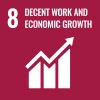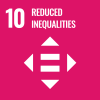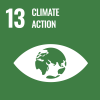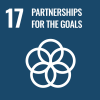The global economy will continue to grow at a steady pace of around 3 per cent in 2019 and 2020 amid signs that global growth has peaked. However, a worrisome combination of development challenges could further undermine growth, according to the United Nations World Economic Situation and Prospects (WESP) 2019.
UN Secretary-General António Guterres cautioned “While global economic indicators remain largely favourable, they do not tell the whole story.” He said the World Economic Situation and Prospects 2019 “raises concerns over the sustainability of global economic growth in the face of rising financial, social and environmental challenges.”
Global growth is expected to remain steady at 3.0 per cent in 2019 and 2020, after an expansion of 3.1 per cent in 2018. Growth in the United States is projected to decelerate to 2.5 per cent in 2019 and 2 per cent in 2020, as the impulse from fiscal stimulus in 2018 wanes. Steady growth of 2.0 per cent is projected for the European Union, although risks are tilted to the downside, including a potential fallout from Brexit. Growth in China is expected to moderate from 6.6 per cent in 2018 to 6.3 per cent in 2019, with policy support partly offsetting the negative impact of trade tensions. Several large commodity-exporting countries, such as Brazil, Nigeria and the Russian Federation, are projected to see a moderate pickup in growth in 2019–2020, albeit from a low base.
However, economic growth is uneven and is often failing to reach where it is most needed. Per capita incomes will stagnate or grow only marginally in 2019 in several parts of Africa, Western Asia, and Latin America and the Caribbean. Even where per capita growth is strong, economic activity is often driven by core industrial and urban regions, leaving peripheral and rural areas behind. Eradicating poverty by 2030 will require both double-digit growth in Africa and steep reductions in income inequality.
Further clouding the prospects are a confluence of risks with the potential to severely disrupt economic activity and inflict significant damage on longer-term development prospects. These risks include waning support for multilateral approaches; the escalation of trade policy disputes; financial instabilities linked to elevated levels of debt; and rising climate risks, as the world experiences an increasing number of extreme weather events.
 Welcome to the United Nations
Welcome to the United Nations




